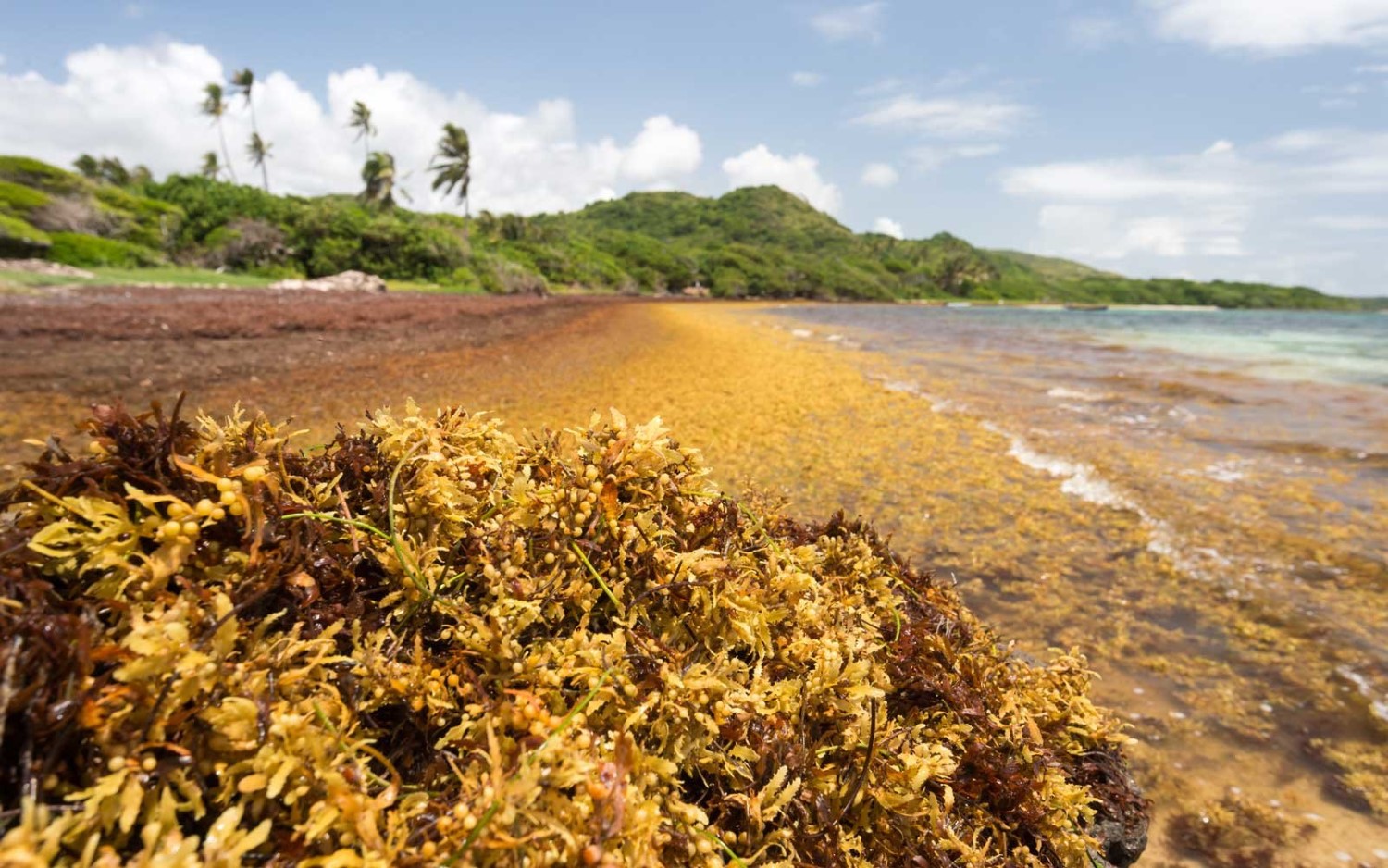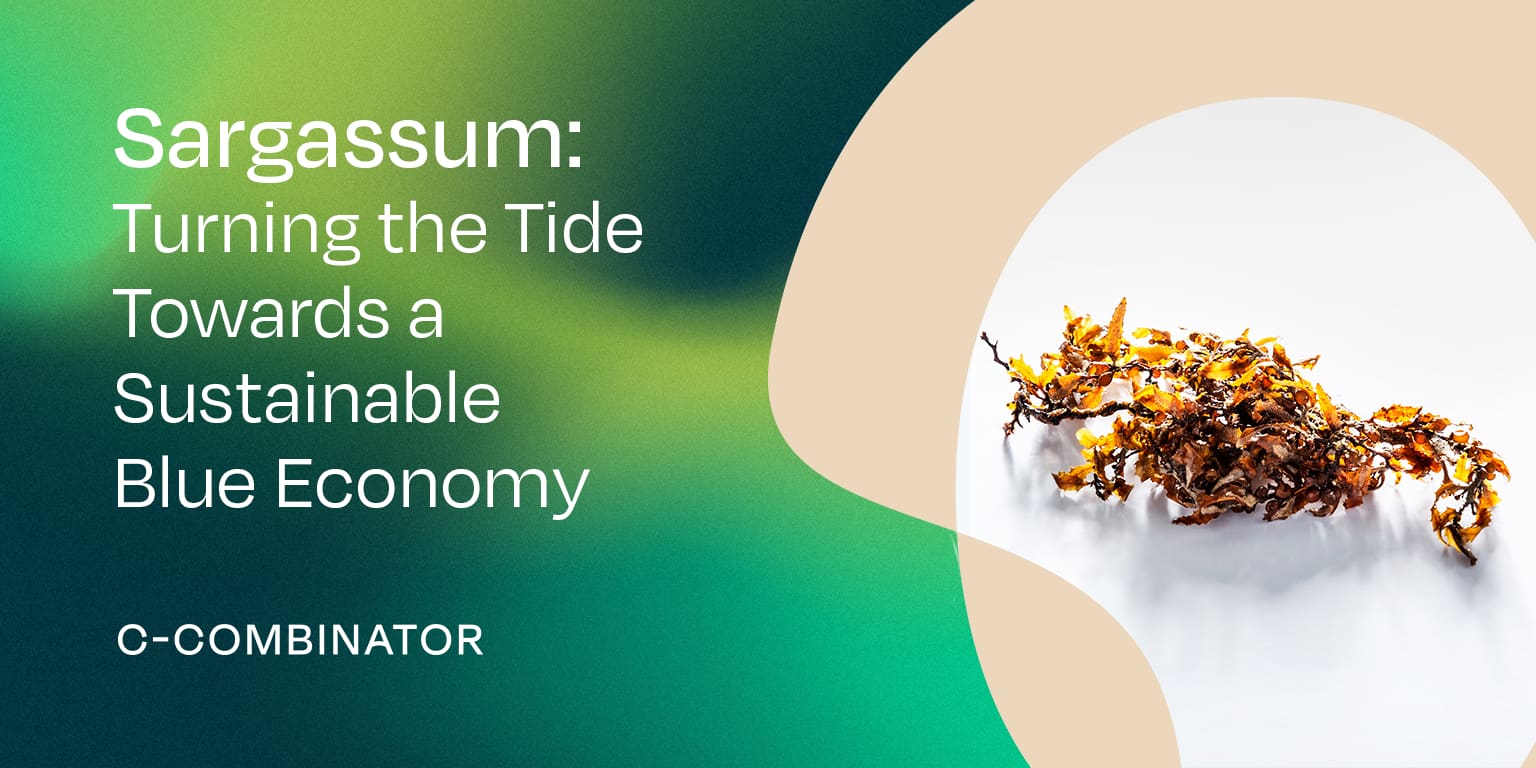Human harvesting of macroalgae, more commonly known as seaweed, dates back at least 10,000 years. For hundreds of years it has been a staple of coastal societies from East Asia to East Africa. But it is now, at a time when climate upheaval requires sustainable societies rooted in responsible stewardship of our planet AND economies built on innovative, plant-based resources, that seaweed’s value is becoming apparent as one of the few natural ways to get to food security and carbon neutrality.
There are three major groups of seaweeds: green algae (Chlorophyta), red algae (Rhodophyta), and brown algae (Phaeophyta).
Also, there are other important distinctions, between benthic seaweeds (those growing out or developing mostly at the bottom of a body of water) and pelagic (living or free-floating in the open sea).
Many seaweeds are some of the fastest growing plants in the world. They thrive in harsh circumstances, absorbing nutrients around them including carbon dioxide. This is why they are key in de-acidifying oceans and improving water quality as they grow by drawing down excessive human by products CO2, nitrogen, and phosphorus.
Out of all existing seaweed types, C-Combinator has centred its business strategy around a brown algae traditionally overlooked because of how hard it is to work with: Sargassum.
About Sargassum
Early Portuguese explorers sailing across the Atlantic bumped into thick layers of this seaweed covering the blue ocean water. The air bladders reminded them of a type of grape called sargaço, and that’s where the name came from
Sargassum is a common brown seaweed. Most commercially harvested seaweeds grow in cold water and in benthic environments near the coast. Kelp is such a species. But cold-water seaweed production in most regions is limited by the strong seasonality and limited wild supply, which translates into high costs. Because of a low and geographically-limited stock, the supply of seaweeds like Kelp are increasingly struggling to meet the high demand required by local processing industries.
Sargassum is pelagic, meaning it grows floating offshore, and is usually found in warmer latitudes. Because of warming oceans, it is available pretty much all year round, with peaks in warmer months.
In fact, the Sargassum C-Combinator harvests is tied to relatively new and now permanent phenomenon in the Caribbean, a direct result of human-created Climate Change we only expect to grow in size in the next century. This makes Sargassum from the Caribbean a new, plentiful source of seaweed biomass to power the 21st century’s marine plant-based revolution.
The Sargassum invasion: turning a climate-change problem into an opportunity
Since 2011, a Sargassum bloom has been burying coasts along the Caribbean. Usually found in small quantities from West Africa to the South Florida, the last decade has seen the creation of one of the largest macroalgae blooms in history, the Atlantic Sargassum Belt.
What’s causing it? The short answer is: an explosive mix of nutrient-rich and warm waters.
Human activities like deforestation, intensive agriculture, and wastewater treatment are flushing an overload of nutrients (e.g. nitrogen, phosphorous) into the sea. It’s not surprise then that the Caribbean Sargassum bloom seems to start near the mouth of the Amazon River, a consequence of increased deforestation and industrial agriculture in the region.
Sargassum Seaweed is a survivor, feasting on these nutrients and blooming wildly in the sunny and warm Caribbean. In moderate amounts, the algae mats act as a biodiversity hub where birds, fish and other marine species gather and prosper. Yet, this excessive seaweed proliferation can lead to harmful consequences for ocean wildlife and even for humans.
In the water, the thick accumulation of organic matter causes hypoxia or anoxia, killing coral reefs and animal populations. Once on shore, the rotting Sargassum releases methane, hydrogen sulfide (H2S) gas and ammonia. This can cause Sargassum poisoning, with symptoms including heart palpitations, shortness of breath, dizziness, vertigo, headache, and skin rashes. On top of that, all this rotten biomass releases methane, which is 34 times worse than CO2 for Global Warming.
The great Atlantic Sargassum belt is now a yearly nightmare haunting people all the way from the Gulf of Mexico to West Africa.
The marine current patterns are guiding the floating algae towards the tourist-cramped beaches. Only between April and October 2020, 1 million tonnes of Sargassum blanketed Mexico’s Caribbean coast.
No surprise tourists run away when the rotting egg stench (otherwise known as the odor from hydrogen sulfide (H2S) gas) permeates the hot air.
On top of that, fisheries are having a hard time as the Sargassum gets caught in their nets and propellers.
Clearly, all this has had a detrimental impact on the local economy heavily relying on tourism and fishing.
But C-Combinator is working to turn the algal tide.
How?
We’ve come up with a circular economy design to convert a calamity into a host of sustainable products.
This implies a dual positive effect for the community threatened by Sargassum proliferation:
- Addressing the environmental, social and economic impacts of this ecological emergency – while generating jobs in the bioeconomyHarvesting the seaweed with local know-how, to benefit local agricultural and manufacturing with a low-cost and robust supply chain alternative

A blooming market: Alginates and beyond
So, what are the benefits of a brown seaweed like Sargassum?
Most seaweeds have long been used as food, feed and sources of hydrocolloids, and more recently, applied to agriculture, cosmetics, biomaterials, and energy generation.
Sargassum hasn’t been a popular seaweed: it’s low on oils, high on arsenic, and presents challenges when extracting its alginate, a polysaccharide used in foods, textiles and pharmaceuticals. But through our proprietary extraction and processing technology, we’ve found a way to extract alginate (and other derivatives) at a much lower cost, using less energy and water, and to a higher quality and versatility than others have been able to with Sargassum.
This means we’re able to unlock their unique ability to absorb pollutants such as ammonia, bacteria, organics and heavy metals in cleaning wastewater. In addition to a wide-range of environmental uses, it is also considered a natural and safe base for packaging and skin-safe surfaces: it’s ideal for producing textiles, foams, and non-wovens – what gives strength and flexibility to the algal tissue as well as helping seaweed manage its water content allows us to design sustainable fabrics and eco-friendly leather for fashion brands.
Will it be worth it?
Well, the global market size for alginates was worth USD 728.4 million in 2020 and may reach over $1 bn by 2028.
Besides alginate, we’re also looking at other unique derivatives from Sargassum like biostimulants.
Most of the world’s food is grown in the subtropics and tropics, latitudes most at risk of climate volatility. Our biostimulant is able to transfer to land crops Sargassum’s unique properties as a highly resilient brown seaweed capable of maximizing it’s nutrient uptake, resistance to high temperatures, droughts, and other stresses. Not only that, but independent tests show our biostimulant can increase yields 15- 40% in crops like cacao and tomatoes
This all fits our vision of a circular economy where agricultural inputs don’t have to be imported, and instead are created to respond to specific local conditions. We’re setting up our agricultural headquarters in Mexico precisely for this reason: to support Mexico’s road to food security and transition to climate-friendly agriculture.
The key combination to unlock a sustainable future
Now you know a bit more about the story behind the benefits of Sargassum brown seaweed.
Through our circular combination, we’ll be solving an ecological crisis by creating new sustainable avenues for a future bioeconomy based on the sea.
We’re one of the few global companies exploring the benefits of the most common tropical brown seaweed, Sargassum, and the only one with an integrated mass collection network and cascading processing operation in key points of the biggest Sargassum bloom, the Atlantic Sargassum Belt. This means scalable systems capable of supplying to a global economy hungry for raw materials that are carbon neutral, non-toxic, and marine biodegradable.

